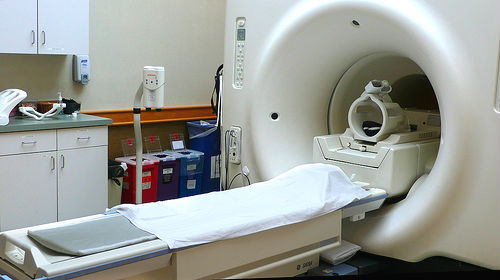Amoebiasis or amoebic dysentery is an intestinal disorder that results in dysentery symptoms like excessive diarrhea, with blood and/or mucus in the feces. The infected individual may also have an enlarged liver or tenderness in the abdomen. Dysentery diagnosis can be made correctly by collecting the patient’s medical history, monitoring his clinical symptoms, and conducting physical and laboratory tests on him to identify the dysentery causes correctly.

Dysentery Diagnosis – The Samples Required For Testing
Usually stool samples and (occasionally) blood samples are collected from the patient for diagnosis. As the number of organisms present in the feces may vary, it is necessary to collect at least 3 stool samples over a period of ten days for an exact diagnosis.
Also, as the trophozoites present in the feces may be killed by water or drying, it is important to collect fresh or concentrated stool samples for proper dysentery diagnosis.
Dysentery Diagnosis – The Kind Of Tests To Expect
Microscopic Examination Of Stool Sample
Microscopic examination is done for detecting cysts and trophozoites (two different forms of amoeba) in the feces. This test also displays white blood cells (WBCs) and pus cells.
Blood Testing For Antibody Detection
The presence of an antibody in the sample indicates a case of invasive (hepatic) amebiasis and confirms the existence of amoebic dysentery in the patient.
Sigmoidoscopy And Colonoscopy
A thin light instrument is inserted into the rectum and colon to collect the tissue required for laboratory tests.
Ultrasound, CT Scan, MRI scan
Conducting an ultrasound test helps detect if the dysentery has caused any complications involving abdominal organs. The CT scan and MRI scan are useful for diagnosing hepatic amebiasis.
Blood Cell Count, ESR, Liver Function Tests
If the Liver Function Tests conducted on the patient reveal leucocytosis, raised ESR, and other abnormalities, it is a definite sign of amoebic dysentery. Increased levels of alkaline phosphatases and transaminases indicate a case of hepatic amebiasis.
Molecular Diagnosis By PCR
Stool samples, live tissues (through biopsy), and aspirates from abscesses are used to detect the organism that is causing dysentery in the patient, using PCR or polymerase chain reaction.
Dysentery Diagnosis – Tests Recommended By WHO
The World Health Organization (WHO) recommends specific stool tests to diagnose amoebic dysentery, such as:
- Culturing of E histolytica from stool samples
- Polymerase Chain Reaction (PCR)
- Antigen detection
As there are various types of dysentery, and each type is caused by a different micro organism and has specific forms of treatment, it becomes necessary to ensure that amoebic dysentery is not confused with any of the other dysentery variants.
This is why laboratory tests play an important role in dysentery diagnosis, because they help ensure that the patient is treated for the right type of dysentery. This dangerous infection must be countered with timely amoebic dysentery treatment, as it can worsen quite quickly and the patient’s condition can turn critical if the condition is ignored. Of course, taking dysentery prevention measures beforehand can help avoid this infection altogether!